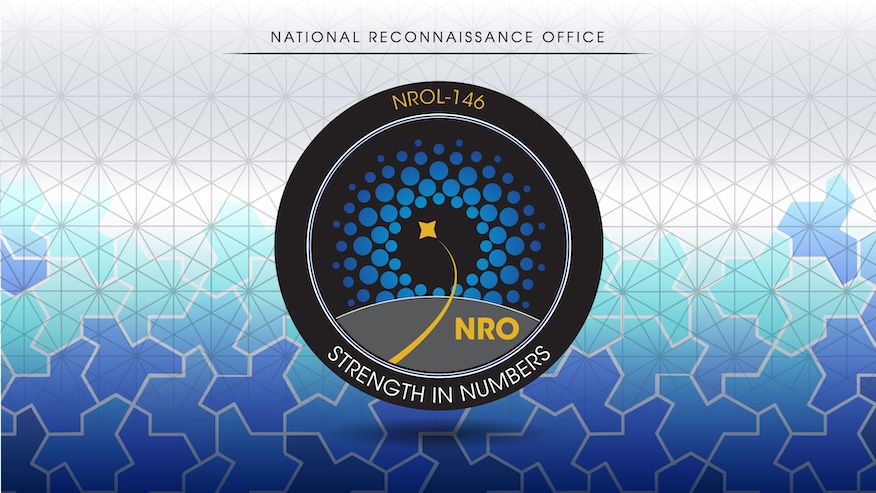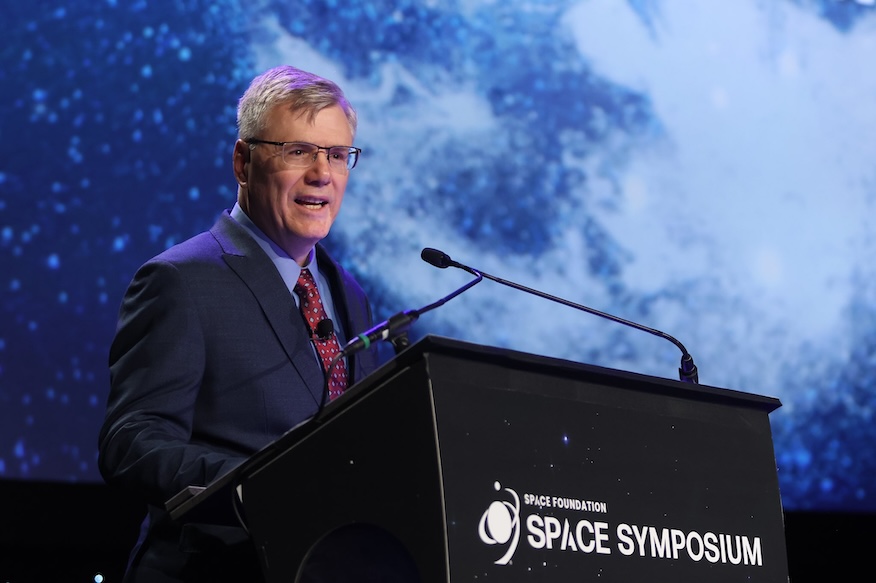
The National Reconnaissance Office (NRO) began start building a constellation of unknown size with a middle-of-the-night launch from Vandenberg Space Force Base in California. The mission, dubbed NROL-146, featured an undisclosed number of satellites riding onboard a SpaceX Falcon 9 rocket.
Liftoff from Space Launch Complex 4 East (SLC-4E) happened at the start of a launch window that opened 1 a.m. PDT (4 a.m. EDT, 0800 UTC).
[embedded content]
The Falcon 9 first stage booster supporting this mission, tail number B1071 in the SpaceX fleet, launched for a 16th time. It’s first two flights were for NRO missions and it also launched a pair of Transporter rideshare flights.
A little more than eight minutes after liftoff, B1071 landed on the SpaceX droneship, ‘Of Course I Still Love You.’ This was the 91st recovery for OCISLY and the 310th booster landing to date for SpaceX.
Starshield takes flight
While the details of the mission are largely under wraps, the payload onboard is believed to be a batch of Starshield satellites. These are government-specific versions of SpaceX’s Starlink satellites, which the company previously stated focus on three main areas:
- Earth observation
- Communications
- Hosted payloads
In the lead up to the final Delta 4 Heavy launch with the NROL-70 payload, Dr. Chris Scolese, the head of the NRO, noted that agency began launching prototypes for its constellation “about five years ago.”
“We recognized that we had challenges, as we’ve mentioned, with Russia and China trying to deny our ability to operate in space,” Scolese said in March. “So, that was one reason. The other reason we needed it is we recognized that we needed to have more persistent coverage of the Earth. So, we needed to proliferate.”

Scolese said that involved working with commercial providers to bring down the cost. He didn’t name check SpaceX in his comments, but he was responding to a question that referred to reporting about Starshield from Reuters.
In April, Reuters was first to report that Northrop Grumman was working with SpaceX to test some of the Starshield satellites as well as to provide sensors for some of the spacecraft. The planned constellation will reportedly consist of “hundreds of satellites,” though a more specific number hasn’t been reported.
The wire service was also first to report that SpaceX was tapped in 2021 to receive a previously undisclosed $1.8 billion contract for the NRO’s new constellation.

During his comments at the 2024 Space Symposium in Colorado, Dr. Troy Meink, the NRO’s principal deputy director, made note of the forthcoming NROL-146 launch, stating that the NRO has “already launched a number of demonstrations over the last few years to verify cost and performance, but this will be the first launch of an operational system.”
“These systems will increase timeliness of access, diversify communications pathways, and enhance our resilience,” Meink said. “Approximately half a dozen of these launches are planned for 2024, with additional launches expected through 2028. You’ll hear more details about launch locations, dates, and times as they approach.”
The NRO isn’t the only government agency to call upon the use of the Starshield satellite bus. SpaceX also built some of the satellites for the Space Development Agency, part of the U.S. Space Force, which launched in 2023 as part of its Tracking Layer Tranche 0A and 0B missions.
- SEO Powered Content & PR Distribution. Get Amplified Today.
- PlatoData.Network Vertical Generative Ai. Empower Yourself. Access Here.
- PlatoAiStream. Web3 Intelligence. Knowledge Amplified. Access Here.
- PlatoESG. Carbon, CleanTech, Energy, Environment, Solar, Waste Management. Access Here.
- PlatoHealth. Biotech and Clinical Trials Intelligence. Access Here.
- Source: https://spaceflightnow.com/2024/05/21/live-coverage-spacex-to-launch-first-batch-of-satellites-for-the-nros-reconnaissance-satellite-constellation/



